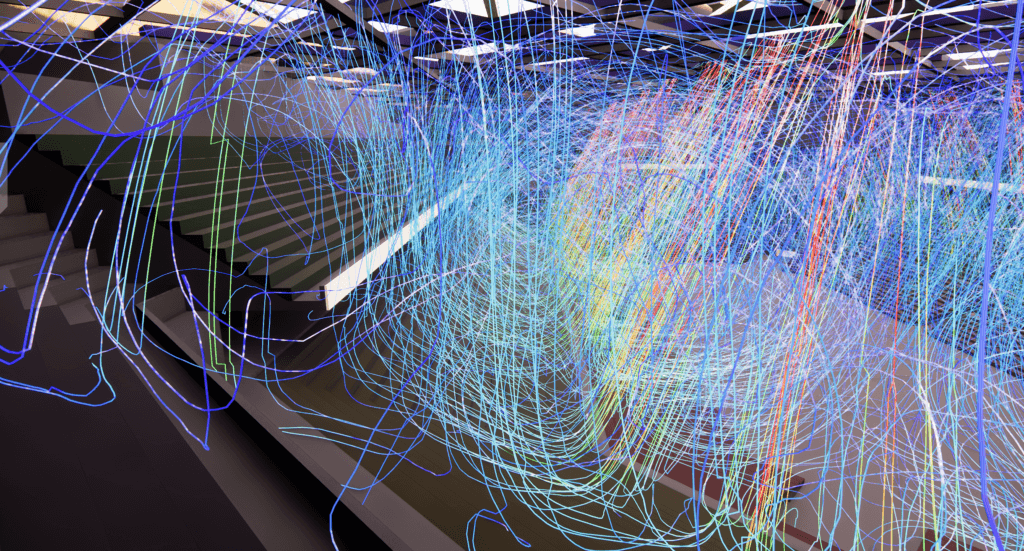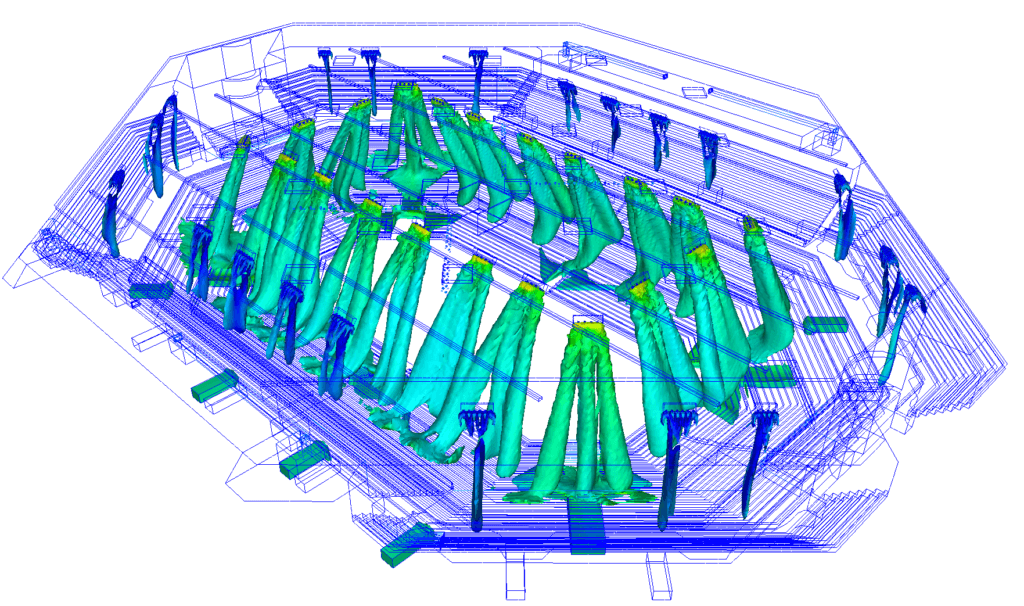Modeling the microclimate of sports facilities
Accueil » Climatic engineering » Modeling the microclimate of sports facilities
Thermal comfort simulation for arenas and stadiums
- Sizing HVAC systems
- Selection of air distribution systems and sizing of equipment rooms
- Study of pollutant diffusion
- Study of critical failure scenarios
- Identification of bypass and recirculation air flows
- Study of trichloramine diffusion
- Precise dimensioning of grating layout
- Site audit
- Checking comfort levels
Continue navigation :
Our latest news :
Our projects :
Our areas of expertise :
Modeling the microclimate of sports facilities
Unique buildings with very special atmospheres
Sports facilities generally belong to the class of unique buildings. Without the involvement of airflow modeling methods in the analysis and evaluation of design solutions for heating and cooling systems, there is no guarantee that comfort and technological requirements will be met throughout the building volume.
Various phenomena influence the climatic parameters of these areas
In large-volume rooms, free convection flows begin to exert a noticeable effect on the propagation of diffusion air veins.
In large rooms, temperature stratification can be very important.
Sports facilities are complicated by complex phenomena such as evaporation from the water surface in swimming pools, sublimation on ice in ice rinks, and scenic effects in the most prestigious events.
Sports facilities are characterized by the presence of significant heat emission from spectators, lighting equipment, etc.
For sports facilities, there are different zones with different values for microclimate parameters: spectator zone and sports zone.
CFD modeling for swimming pools and aquatic centers
Study of trichloramine diffusion
When designing pools, various design parameters need to be considered, such as air temperature, relative humidity, water temperature and water surface, as well as air velocity, all of which affect the evaporation rate of pool water.
On the other hand, chlorine is widely used in swimming pools for its disinfectant qualities.
However, it can present certain dangers when it comes into contact with organic matter.
Chloramines are produced by combining a chlorinated disinfectant with sweat, cosmetics and swimmer’s urine.
This chemical reaction leads to the development of airborne chloramines, chemical compounds that can cause irritation of the respiratory tract, skin and eyes. People who work near swimming pools, such as lifeguards, are more likely to have problems with their respiratory tracts than ordinary people.
The quality of the calculation results depends on the input data, and in particular on the quality of the physicochemical emission laws.
In reality, the emission law is dynamic and may depend on ambient temperature and humidity. Different levels of modeling complexity are therefore possible, the first being the use of constant laws to integrate pollutant diffusion.
It is then possible to compare different ventilation systems and identify the zones impacted by over-concentration of pollutants.
CFD modeling for sports facilities
A design, verification and sizing tool.
Airflow modeling is performed using three-dimensional mathematical modeling methods (CFD approach).
CFD is used to analyze and evaluate air distribution design solutions. The conformity of the microclimate parameters maintained in the plant premises is verified on the basis of calculated values for temperature, velocity and humidity.
Identification, where applicable, of a zone with deviating average and local values for temperature, concentration of harmful substances, humidity, speed in the plant premises.
If we identify areas with microclimate parameters different from those defined by the design teams in charge of the project, we are able to propose adjustments and original design solutions to resolve these issues.
Climate control: on the same subject

Thermal draft effect
Find out more




